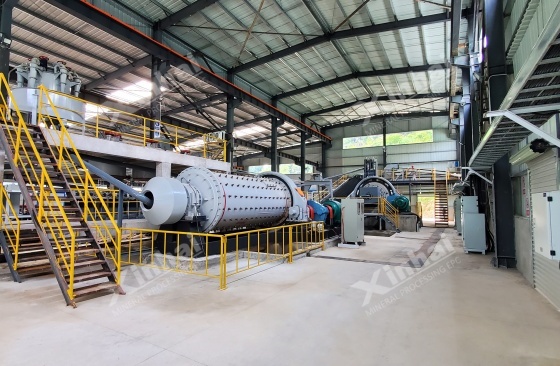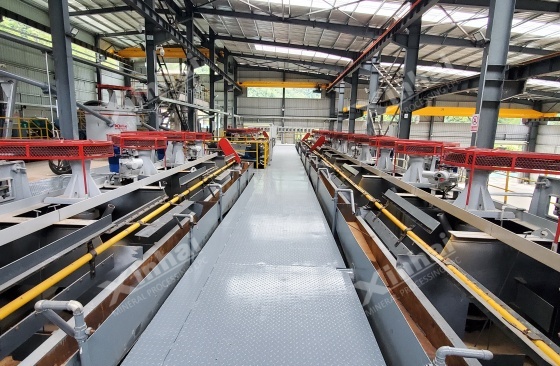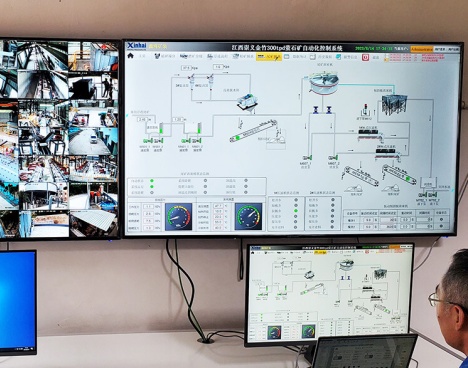If you want to know more information (such as product/process price, etc.), please contact us 24-hour telephone
Molybdenum is a non-renewable strategic metal. Globally, molybdenum ore resources are primarily distributed in China, the United States, and Chile. In China, major molybdenum deposits are located in Jinduicheng, Shaanxi Province, and Luanchuan, Henan Province. However, these ores are typically low-grade and contain multiple associated minerals, making the separation process more challenging.
Molybdenum plays a critical role in modern industry. In the steel industry, ferromolybdenum alloys enhance the strength, corrosion resistance, and high-temperature performance of steel. In the defense sector, molybdenum-based high-temperature alloys are used in the production of turbine blades for aircraft engines. In the new energy field, molybdenum disulfide contributes to advancements in hydrogen electrolysis and lithium-sulfur battery technology.
Faced with both rising demand across various industries and the depletion of molybdenum ore reserves, how can beneficiation and deep processing technologies be improved? Keep reading — this article will guide you to the answer.

1. Ore Pretreatment
The primary objective of molybdenum ore beneficiation is to recover molybdenite (MoS₂). While molybdenite exhibits excellent natural floatability, a portion of it is intricately associated with gangue minerals such as quartz and feldspar, making its separation more difficult. Moreover, the uneven particle size distribution of molybdenite further complicates the beneficiation process.
To effectively liberate gangue minerals and achieve monomer dissociation, molybdenum ore must undergo pretreatment involving crushing and grinding. Typically, a multi-stage crushing and grinding process is employed, including the following steps:
Coarse Crushing: The mined molybdenum ore is fed into a jaw crusher for primary crushing, reducing the particle size to less than 150 mm.
Medium and Fine Crushing: The coarsely crushed ore is then processed in a cone crusher for secondary and tertiary crushing, reducing the particle size to below 30 mm.
Grinding: The crushed ore is conveyed to a ball mill for further size reduction. A two-stage or three-stage grinding circuit is commonly adopted. The first stage (coarse grinding) is typically carried out using a grate-type ball mill, while the final stage (fine grinding) is performed using an overflow ball mill. After grinding, the particle size is generally controlled such that 60–75% of the material passes through a 200-mesh screen, which is sufficient to achieve monomer dissociation of molybdenite.
Note: Particle size control during grinding is critical. If the particles are too coarse, complete liberation cannot be achieved. Conversely, excessive grinding can lead to over-pulverization and "sliming," which adversely affects flotation performance.

2. Molybdenum Ore Flotation Process
The flotation process for molybdenum ore typically follows a three-stage sequence: roughing – scavenging – concentrating.
Roughing: Hydrocarbon oil collectors (such as kerosene or diesel) are used to enhance the hydrophobicity of molybdenite. Inhibitors such as sodium silicate (water glass) and starch are added to suppress the flotation of gangue minerals. This stage rapidly recovers a coarse molybdenum concentrate.
Scavenging: The tailings from the roughing stage undergo scavenging to recover residual molybdenum particles and improve overall recovery.
Concentrating: Through multiple stages of regrinding and cleaning flotation, the molybdenum concentrate grade is further improved, typically reaching 45%–55%.
Note: A key challenge in molybdenum flotation is the separation of molybdenite from copper minerals, as both have similar floatability. In copper-molybdenum ores, reagents such as sodium sulfide or thioglycolic acid can be added under alkaline conditions to depress copper minerals. A flotation column is then employed to enhance separation precision and selectivity.
For complex ores, spiral chutes may be used for pre-enrichment before flotation. This allows for the early rejection of tailings, reducing the flotation circuit load and improving overall efficiency.
3. Ore Dressing Equipment and Intelligent Control
Modern molybdenum beneficiation plants employ automated equipment with a high degree of intelligence, significantly reducing labor costs and improving operational efficiency.
Examples of Automated Ore Dressing Equipment:
Intelligent sorting systems, such as XRT (X-ray Transmission) sensor-based sorters, utilize X-ray technology to detect ore composition in real time. These systems can pre-discard up to 30% of waste rock at the crushing stage, thereby reducing energy consumption during grinding.
In the flotation stage, aerated flotation machines (e.g., KYF flotation cells) enhance the mineralization rate of bubbles by up to 25% through optimized impeller design and improved aeration efficiency.
Intelligent Control:
Automation systems dynamically regulate reagent dosing in real time to minimize fluctuations in flotation performance indicators.
Digital twin technology creates a virtual replica of the processing plant, simulating equipment performance under various conditions. It enables predictive maintenance by issuing early warnings for issues such as blockages and overloads, while also optimizing process parameters through machine learning algorithms.

1. Purification and Roasting of Molybdenum Concentrate:
Molybdenite concentrate is desulfurized through oxidative roasting in a multi-chamber furnace at 550–750 °C to produce molybdenum trioxide (MoO₃). The flue gas is treated in an environmentally friendly manner using a combination of electrostatic dust collection and wet desulfurization. For high-purity applications, an acid leaching–ion exchange process is employed to remove metallic impurities, enabling the production of ammonium molybdate with a purity of up to 99.99%.
2. Production of Molybdenum Metal Materials:
Powder metallurgy involves the reduction of MoO₃ using hydrogen to produce molybdenum powder. This is followed by isostatic pressing and sintering to form a dense billet. Vacuum arc melting is used to produce ultra-high-purity molybdenum ingots, which are further processed into molybdenum plates (as thin as 0.02 mm) and wires (as fine as 5 μm) through rolling, forging, and other mechanical processes. These products are widely used in high-temperature furnaces and semiconductor devices.
3. High Value-Added Molybdenum Chemicals:
Ammonium molybdate is used in flame retardants and photovoltaic coatings. Nano molybdenum disulfide, synthesized via hydrothermal methods, serves as an efficient hydrogen evolution catalyst (with a water electrolysis overpotential of <200 mV) and a high-performance lubricant (friction coefficient ~0.03). In lithium–sulfur batteries, it can extend cycle life by up to 3 times and enhance the industrial chain's added value by 5–8 times.
Conclusion
The molybdenum industry chain involves a progression from raw ore → molybdenum concentrate → ferromolybdenum/molybdenum oxide → molybdenum metal materials → molybdenum-based chemicals. At each stage, scientifically sound and well-optimized processing steps are essential.
With the continuous advancement of molybdenum beneficiation and deep processing technologies, higher-quality molybdenum products are being produced—playing an increasingly important role in modern industries such as steelmaking, aerospace, energy, and electronics.